4.1 Making a 3D photo
To create a photo with the 3D effect you must create a 3D project. There exist two scenarios:
- using a wizard and green/blue-screen photo;
- using the Template panel and capturing a photo with the camera.
Using the 3D wizard scenario
To create a photo with the 3D effect you need to perform the following actions:
1. Create a new project by running the File >> New 3D photo... command, or clicking  on the toolbar (Fig. 4.1).
on the toolbar (Fig. 4.1).
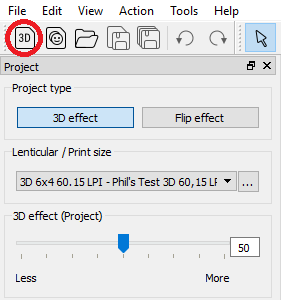
Fig. 4.1. Main toolbar
2.The software will run the wizard (Fig. 4.2).
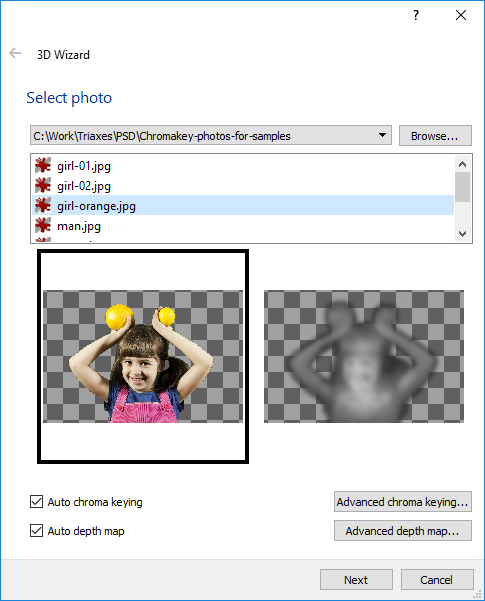
Fig. 4.2. Photo selection for 3D project
Click "Browse..." and choose a photo on your computer. When selecting a photo from the list, you will see the preview of the processed photo below. Auto-processing includes background deletion (chroma keying) and depth map generation, if the following options are checked: Auto chroma keying and Auto depth map. The default values for these options can be set in the program Settings (see section 2.7 Program settings). If necessary, you can process the image chroma key or enhance the depth map manually.
Advanced chroma keying... - open the dialog to manually delete or restore the background using the key color. For more details see 3.3 Chroma key editor.
Advanced depth map... - open the dialog to manually adjust and generate a depth map for the chosen photo. For more details see 3.2 Depth map of the layer.
Click "Next" to go to the next step. Click "Cancel" to exit the wizard.
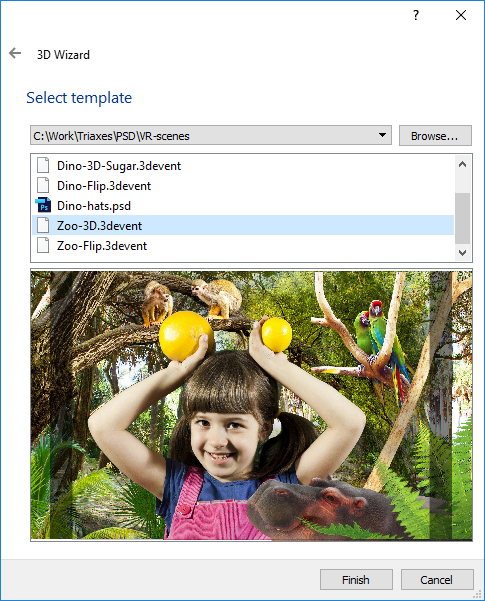
Fig. 4.3. Template selection for 3D project
3. Now choose a template for virtual scene creation. Click "Browse..." and choose the required template. In the preview area you can see how the chosen photo will automatically fit the template (Fig. 4.3).
Click "Finish" to finish working with the wizard. Click the left arrow at the top of the wizard window to return to the previous step. To exit the wizard click "Cancel" - no project will be created.
4. After the project has been created, you can change either the background image (Background layer) or the photo itself (Photo layer). Click "Set background..." in the Project panel to choose the image file or click "Set photo..." to choose the photo on your computer (Fig. 4.4).
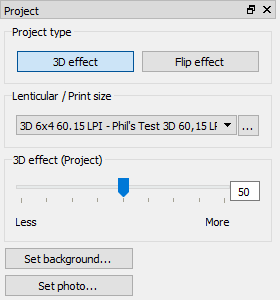
Fig. 4.4. Project panel
5. To generate a 3D photo go to the Lenticular tab in the work area. You can zoom in or zoom out the image display area, save the image to a file, or print the generated image by clicking "Print..." (Fig. 4.5).
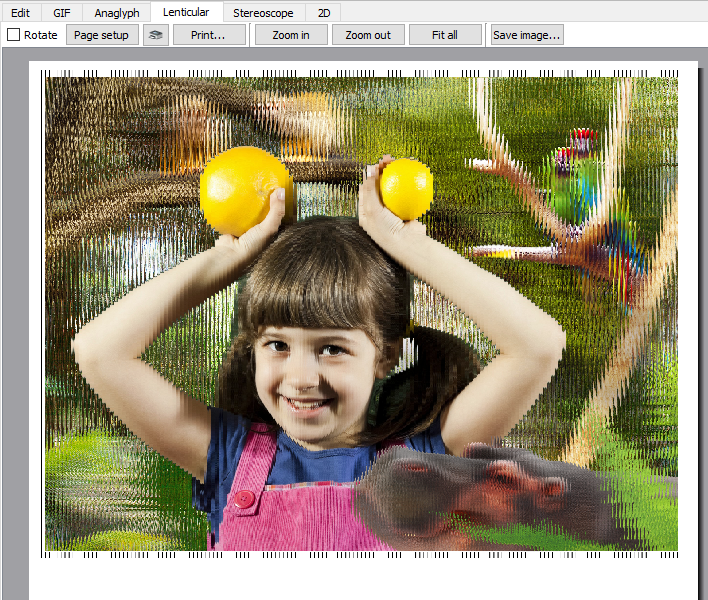
Fig. 4.5. Lenticular 3D image tab
You can also get an anaglyph image, an animated GIF image, a stereo pair for the stereoscope and a usual 2D image by choosing the corresponding tabs.
Using a template and a captured photo scenario
1. Select a template from your computer by clicking "Browse..." in the Template panel on the left side of the software main window, or choose the required template from the list of templates located in the latest folder used (Fig. 4.6) .
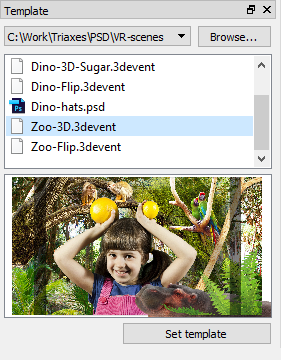
Fig. 4.6. List of templates
2. Open the template in the project for editing by clicking "Set template".
Now the project is available for editing. You will be automatically focused on the Layers tab, where you can edit the project, adjust separate layers and capture photos by the camera.
3. Activate the Live VUE mode by clicking  on the toolbar (Fig. 4.7.), or by clicking the button on the Live VUE screen (if the mode has been already activated earlier).
on the toolbar (Fig. 4.7.), or by clicking the button on the Live VUE screen (if the mode has been already activated earlier).

Fig. 4.7. Live VUE toolbar
4. Click ![]() on the Live VUE screen or toolbar to take a photo with a 5-second delay.
on the Live VUE screen or toolbar to take a photo with a 5-second delay.
5. Repeat steps 3 and 4 if you want to take a new photo.
6. After the project has been created, you can change the background image (Background layer). For that click "Set background..." in the Project panel to choose the image file. If you want to add a photo to the project, click "Set photo...".
7. To generate a 3D photo go to the Lenticular tab in the work area. You can zoom in or zoom out the image display area, save the image to a file, or print the generated image by clicking "Print...".
You can also get an anaglyph image, an animated GIF image, a stereo pair for the stereoscope and a usual 2D image by choosing the corresponding tabs.